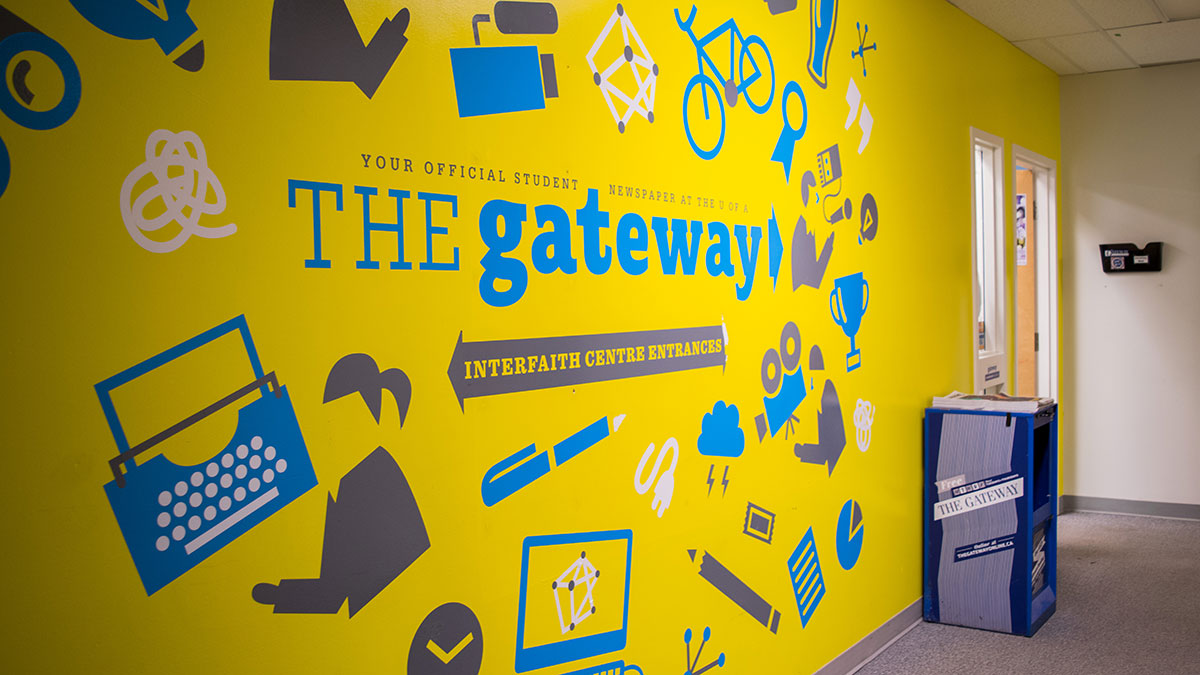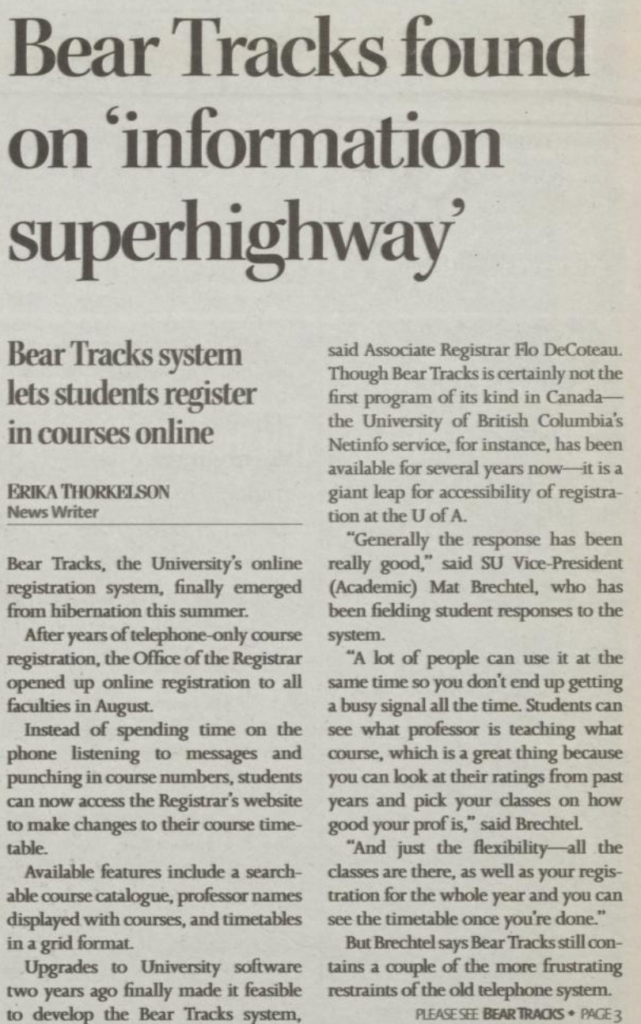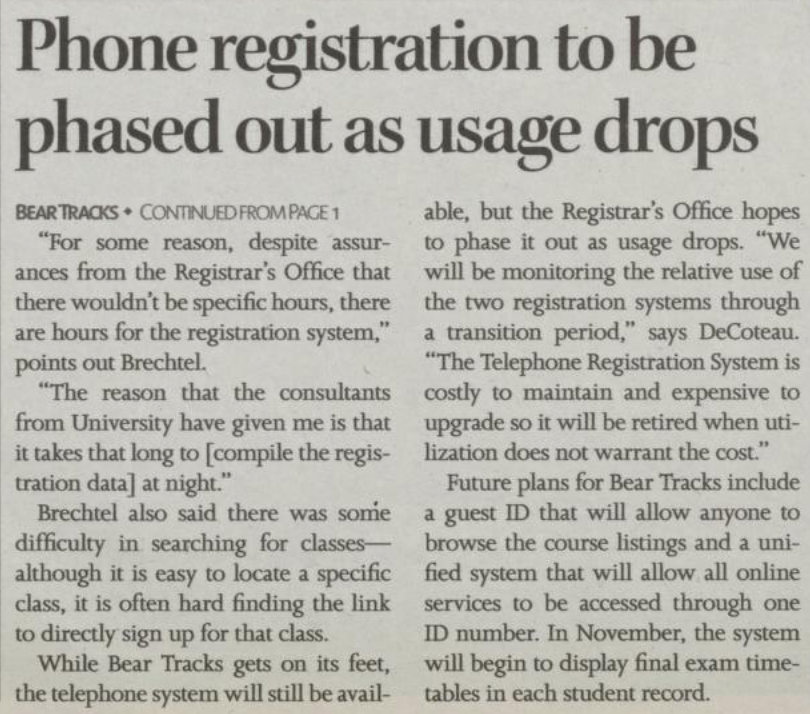From the Archives: “Bear Tracks found on ‘information superhighway'”
BearTracks system has allowed students to register in courses online for 18 academic years
 Christina Varvis
Christina VarvisFrom the Archives is The Gateway’s ongoing series of recounting historical articles written by the publication from years past.
The University of Alberta has allowed students to register for classes online for 18 academic years.
The system first came online for all faculties in August 2002 when it offered course registration via internet. At the time, Gateway staff called the internet the “information superhighway.”
In this latest iteration of From the Archives, The Gateway goes back to the 29 August 2002 edition reporting on the first academic year where students waited to register for classes online as opposed to on the phone.
By: The Gateway News Writer Erika Thorkelson
“Bear Tracks, the University’s online registration system, finally emerged from hibernation this summer.
After years of telephone-only course registration, the Office of the Registrar opened up online registration to all faculties in August.
Instead of spending time on the phone listening to messages and punching in course numbers, students can now access the Registrar’s website to make changes to their course time table.
Available features include a searchable course catalogue, professor names displayed with courses, and timetables in a grid format.
Upgrades to University software two years ago finally made it feasible to develop the Bear Tracks system, said Associate Registrar Flo DeCoteau. Though Bear Tracks is certainly not the first program of its kind in Canada — the University of British Columbia’s Netinfo service, for instance, has been available for several years now — is a giant leap for accessibility of registration at the U of A.
“Generally, the response has been really good,” said SU Vice-President (Academic) Mat Brechtel, who has been fielding student responses to the system.
“A lot of people can use it at the same time so you don’t end up getting a busy signal all the time. Students can see what professor is teaching what course, which is a great thing because you can look at their ratings from past years and pick your classes on how good your prof is,” said Brechtel.
“And just the flexibility — all the classes are there, as well as your registration for the whole year and you can see your timetable once you’re done.”
But Brechtel says Bear Tracks still contains a couple of the more frustrating restraints of the old telephone system.
“For some reason, despite assurances from the Registrar’s Office that there wouldn’t be specific hours, there are hours for the registration system,” points out Brechtel.
“The reason that the consultants from the University have given me is that it takes that long [to compile the registration data] at night.”
Brechet also said there was some difficulty searching for classes — although it is easy to locate a specific class, it is often hard finding the link to directly sign up for that class.
While Bear Tracks gets on its feet, the telephone system will still be available, but the Registrar’s Office hopes to phase it out as usage drops.
“We will be monitoring the relative use of the two registration systems through a transition period,” says DeCoteau.
“The Telephone Registration System is costly to maintain and expensive to upgrade so it will be retired when utilization does not warrant the cost.”
Future plans for Bear Tracks include a guest ID that will allow anyone to browse the course listings and a unified system that will allow all online services to be accessed through one ID number. In November, the system will begin to display final exam timetables in each student record.”






